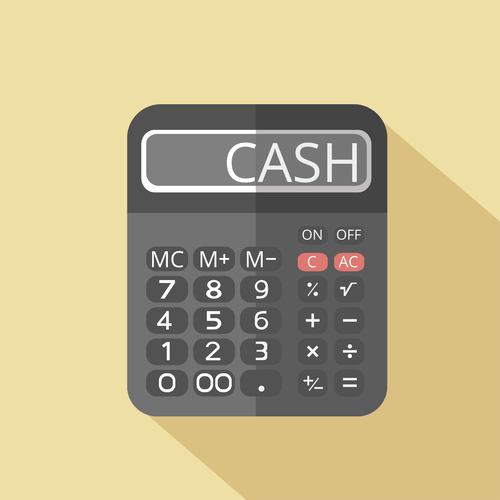Bookkeeping
The accounting cycle definition

The accounting cycle incorporates all the accounts, journal entries, T accounts, debits, and credits, adjusting entries over a full cycle. After the finalization of the trial balance report, Financial Statements are prepared and presented to senior management for approval and further reporting to owners. Financial statements include Profit and Loss Statement, Balance Sheet, cash-flow statements, statement of changes in equity, and notes to these financial statements. Adjusting entries are required to be is because a transaction may have influence revenues or expenses beyond the current accounting period and to journalize to the events that not yet recorded.
- The accounting cycle is a series of steps starting with recording business transactions and leading up to the preparation of financial statements.
- To determine the equality of debits and credits as recorded in the general ledger, an unadjusted is prepared.
- Regardless, most bookkeepers will have an awareness of the company’s financial position from day to day.
- Financial statements are a well-structured summarization of your transactions.
- The accounting process is a combination of activities that begin when a transaction occurs and end with its inclusion in the financial statements at the end of the accounting period.
- It is designed with reference to accounting school lessons where any accounting students might have been taught.
Vouchers are prepared at the time when actual transactions occur. These documents have a special legal value and are usually hand/ digitally signed by the person who is preparing these. Unadjusted trial balance makes the next steps of the accounting process easy and provides the balances of all the accounts that may require an adjustment in the next step.
Trial Balance
Many companies will use point of sale technology linked with their books to record sales transactions. Beyond sales, there are also expenses that can come in many varieties. You need to perform these bookkeeping tasks throughout the entire fiscal year. Alternatively, the budget cycle relates to future operating performance and planning for future transactions. The accounting cycle assists in producing information for external users, while the budget cycle is mainly used for internal management purposes.
This is the output of the accounting process, which is used by the interested parties both within and out of the organization. The sequence of accounting procedures used to record, classify and summarize accounting information is called the Accounting Cycle. Experts use “Accounting accounting cycel Cycle” and “Accounting Process”; to describe the ten steps of accounting procedure in any organization. There are three main types of adjusting entries, deferrals, accruals, and estimates. The general ledger is essentially the backbone of your accounting system.
JS017-FA-GS ◉ MERCHANDISE COMPANY ACCOUNTING CYCLE
At the end of the accounting period, a trial balance is calculated as the fourth step in the accounting cycle. A trial balance tells the company its unadjusted balances in each account. The unadjusted trial balance is then carried forward to the fifth step for testing and analysis. The first step in the accounting cycle is identifying transactions. Companies will have many transactions throughout the accounting cycle.
- The debits and credits from the journal are then posted to the general ledger where an unadjusted trial balance can be prepared.
- The Detailed closing process will be deliberated in upcoming sections.
- However, keeping track of your business’ finances and accounting is extremely important.
- The record entered into the daybooks is a brief summary of the content written on vouchers issued at the time of the transaction.
- Either you are an accounting student, an accounting employee or a person who just start to learn accounting, this spreadsheet should help you understand accounting quickly.
It’s worth noting that some businesses also have internal accounting cycles that have a shorter accounting period. These internal accounting cycles follow the same eight accounting cycle steps and can last anywhere from one month to six months. Full cycle accounting refers to the complete set of activities undertaken by an accounting department to produce financial statements for a reporting period.
Steps in the Accounting Cycle
In the first step of the accounting cycle, you’ll gather records of your business transactions—receipts, invoices, bank statements, things like that—for the current accounting period. These records are raw financial information that needs to be entered into your accounting system to be translated into something useful. The accounting cycle is started and completed within an accounting period, the time in https://www.bookstime.com/articles/bookkeeping-for-large-business which financial statements are prepared. However, the most common type of accounting period is the annual period. Until 1980 or years before computer era, general ledger is the important part of accounting cycle to summarize journals before being entried to financial statement. Nowadays, financial statements don’t have to pull data from General Ledger since they can pull data from journals automatically.
- For example, you may have paid big money for a new piece of equipment, but you’d be able to write off part of the cost this year.
- This means that quarterly companies complete one entire accounting cycle every three months while annual companies only complete one accounting cycle per year.
- The process is typically done at the end of an accounting period.
- A journal entry affects two accounts, where one is debited and the other credited.
- Is keeping up with the accounting cycle taking up too much of your time?
- Cash accounting requires transactions to be recorded when cash is either received or paid.
- The accounting cycle incorporates all the accounts, journal entries, T accounts, debits, and credits, adjusting entries over a full cycle.
Now that you’re done with making adjusting entries, it’s time to put them in a new trial balance. This is once again done to prove that debits and credits balance in the end. The last step in the accounting cycle is preparing financial statements—they’ll tell you where your money is and how it got there. It’s probably the biggest reason we go through all the trouble of the first five accounting cycle steps.
If you’re looking for any financial record for your business, the fastest way is to check the ledger. The purpose of this step is to ensure that the total credit balance and total debit balance are equal. This stage can catch a lot of mistakes if those numbers do not match up. As described above, this spreadsheet emulates accounting cycle school lesson. You will see a front page with clickable accounting cycle diagram. This spreadsheet is basically similar with other program where it will summarize journal transactions automatically but it will allow you to follow the process.

Typically, companies integrate their accounting software with their payment processor and point-of-sale (POS) software to capture revenue. JournalSHEET | be Accountant is an accounting spreadsheet to learn and practice accounting on the fly. Fits you who want to record financial transactions and generate financial report based on accounting theory. Either you are an accounting student, an accounting employee or a person who just start to learn accounting, this spreadsheet should help you understand accounting quickly.
There are two worksheets for each report model, Format and Printed worksheet. Format worksheet is a worksheet where you select respective Chart of Accounts while Printed worksheet is a worksheet to print particular report. AllBusiness.com is a business Web site that provides information and services to small businesses. Muntasir Minhaz Muntasir runs his own businesses and has a business degree. Documents such as; a receipt, an invoice, a depreciation schedule, and a bank statement, etc. provide evidence that an economic event has actually occurred. My Accounting Course is a world-class educational resource developed by experts to simplify accounting, finance, & investment analysis topics, so students and professionals can learn and propel their careers.

